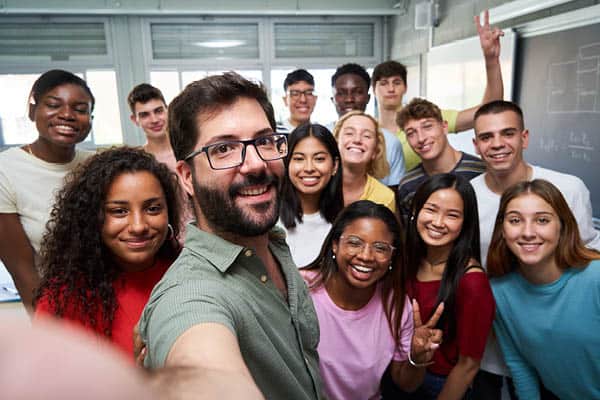“The relationships we cultivate with students and staff members are the most powerful tool we have to create the sense of belonging,” writes Sarah Mathew, Senior Executive Director of Outreach and Partnerships, Care Solace, in a post appearing in eSchool News.
“Belonging is a fundamental human need. We are all searching for a sense of connection with the people and places in our lives. Students and school staff are no different, so it’s crucial to ensure learning environments foster a sense of belonging.
“There’s simply no time to waste; we must make our schools welcoming, safe spaces for students and staff alike.
Build trusting relationships with students to create a culture of belonging
“Trust is the cornerstone of belonging. Students need us to be accessible, dependable, and trustworthy. When students trust us, they’ll be more willing to be honest about their struggles and help us stay in tune with what’s happening in the halls that we don’t see.
Celebrate student backgrounds and cultures
“Celebrating cultures is more than just hosting an event; it’s about consistently honoring the ethnicity, background, and experiences of the students we serve. By recognizing the diverse backgrounds and cultural traditions of the school’s communities, we create avenues for students to share and celebrate their experiences openly.
“Encouraging open dialogue and allowing students to lead discussions about their cultures fosters a climate of true inclusivity. Celebrating and embracing students’ lived experiences greatly increases students’–and their family’s–feelings of belonging.
Engage the community as a partner
“Schools that focus on belonging recognize the power of community engagement. For example, when a community member talks openly about a challenging topic, such as their family’s experience with substance abuse, it can create a sense of belonging and validation for students coping with a similar situation. School advisory councils that involve students, families, and staff as decision-makers influence school operations and bridge the gap between students and their communities.
Empower school counselors through collaborative partnerships
“Relationships take time to foster. Students need to be seen, and staff need the time to truly see them. When staff are overburdened, as many are nationwide, it hinders their ability to build meaningful relationships with students. On average, it takes up to 60 phone calls to connect a student, family member, or staff member to the proper mental health resources.
“That’s where partners providing mental health care coordination services come into play. Collaborations like this can alleviate the burden on school staff and save them countless hours of tedious work. What’s more, a third-party partner can also provide mental health support to school staff. School staff are the backbone of a school community, and their mental health and well-being are essential to a thriving school culture.
“After a prolonged period of disconnection, building strong relationships is more important than ever. Dr. Bruce Perry, in his book The Boy Who Was Raised As a Dog: And Other Stories from a Child Psychiatrist’s Notebook says, “Relationships are the agents of change and the most powerful therapy is human love. People, not programs, change people.”
As you reflect on the practices in your school community, remember that the trusting relationships we cultivate with students and staff members are the most powerful tool we have to create the sense of belonging.”
eSchool News





